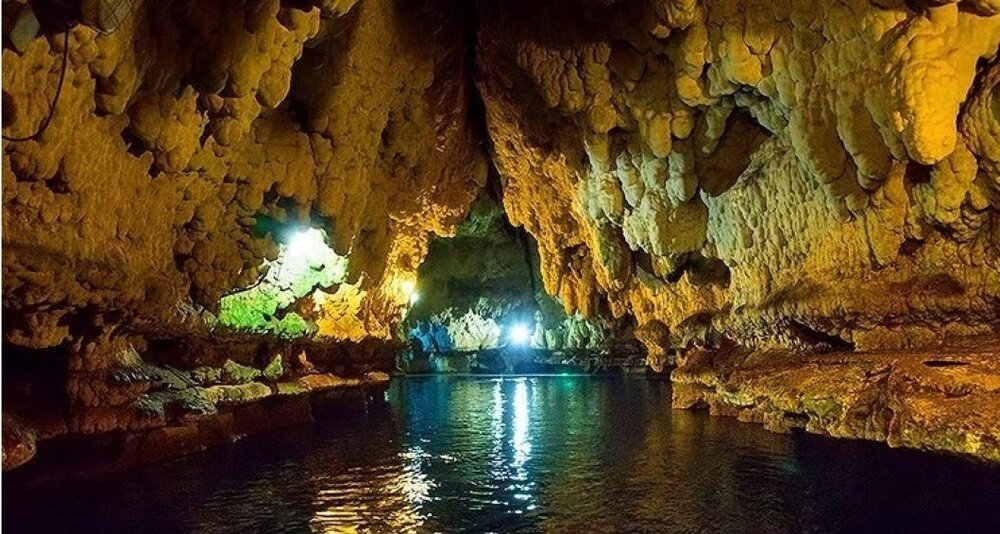Ali Sadr Cave is one of the rare samples of water caves in the world. It is located 75 kilometers to the northwest of Hamedan in a village by the same name which is one of the districts of Kabudarahang Township.
Ali Sadr Cave can be reached via three routes:
1. Hamedan-Bijar via Lalejin Road: It was constructed recently.
2. Hamedan-Tehran Road, via Nojeh Air Base
3. Hamedan-Salehabad Road
Ali Sadr Cave was formed in Sariqieh Heights. There are two other caves in its vicinity: Subashi and Sarab. Their distances from Ali Sadr Cave are 11 and 7 kilometers respectively. The caves are probably interlinked to Ali Sadr Cave in view of the extensive layers of crystallized calcareous in the region.
History
Geologists believe that the rocks of this mountain pertain to the second geological period i.e. Jurassic (190-130 million years ago). Based on evidence within the cave, it was inhabited by primitive people. Residents of Ali Sadr and other nearby villages knew this and used its water, but it was not used for tourism. Hamedan mountaineering team with 14 members visited the cave and explored it in 1963. They used simple device such as flashlights and rubber tube to navigate. The news of expedition was published in local newspapers in 1967. After the publication of the news, investigators, climbers and naturalists rushed to the site. Hamedan climbers extended the diameter of the entrance by 50 cm in 1973. The cave was open to visitors in 1975.
In those days, villagers used flashlights, boats, and paddles to direct tourists through the cave.
Formation process
The combination of rainwater and CO2 formed mild carbonic acid which seeped into the calcareous fields and through chemical reactions, unstable sodium bicarbonate was formed. This soluble chemical composition created abyss the thick calcareous layers.

Comment (0)